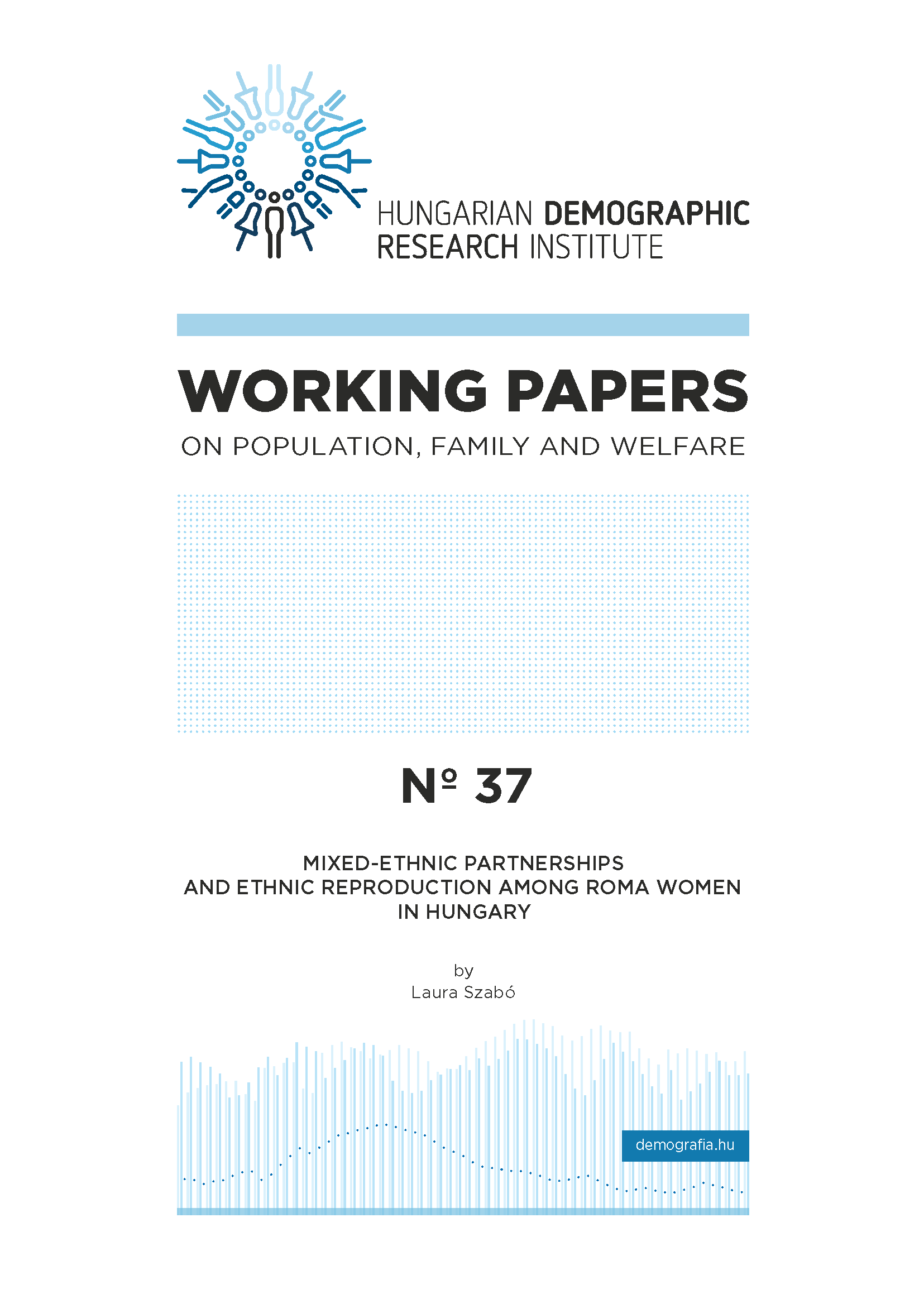Mixed-ethnic partnerships and ethnic reproduction among Roma women in Hungary
DOI:
https://doi.org/10.21543/WP.2021.37Abstract
The aim of the analysis was to document the prevalence of mixed-ethnic partnerships and the ethnic reproduction rate among the Roma population living in Hungary in 1990 and 2011, based on data from national censuses. The ethnic reproduction rate should be used as an input variable for population forecast of Roma population. Thus in the first part of the paper we reviewed the prevalence of endogamous and the mixed-ethnic partnerships, and the factors affecting the probability of mixed-ethnic partnership formation. In the second part of the paper we calculated on one hand the proportion of children born in mixed-ethnic partnerships identified by their parents as Roma, and on the other hand the ethnic reproduction rate measured among Roma women. Our results indicated, that the proportion of Roma men and women living in endogamous partnerships decreased between 1990 and 2011 and this decrease was present in all educational groups. Conversely, the proportion of mixed ethnic partnerships increased in the last 20 years, as well the percentage of Roma men and women living in such partnerships. The vast majority of children born in Roma endogamous partnerships was identified as Roma by their parents in 2011 (98.5%). In the mixed-ethnic partnerships only 38.4% of children was identified as Roma and 57% as non-Roma in 2011. Parents in mixed-ethnic partnerships were more likely to identify their children as non-Roma if the mother has a mixed- or non-Roma ethnicity; if the parents were 40 years of age or older; had at least vocational (men) or high school (women) education; lived in city and the concentration of Roma people in their residence place was low. The ethnic reproduction rate of those Roma women and their children who consider themselves primarily (as their first identity) Roma, was 94.6% in 1990 and 89.5% in 2011. Thus the ethnic reproduction loss is 10% in 2011, which is twice as high as the 1990 reproduction loss, which was only 5%. Based on our calculations, we concluded that a process of demographic ethnic assimilation is taking place in Hungary among Roma women.


